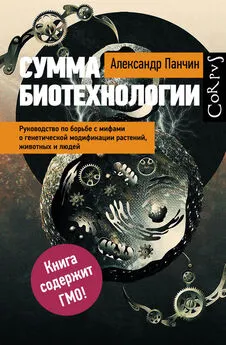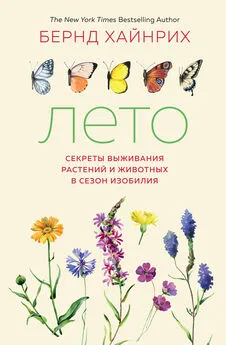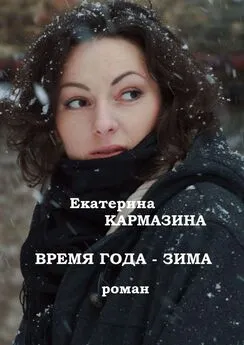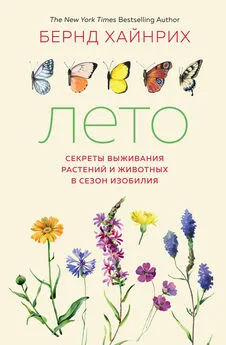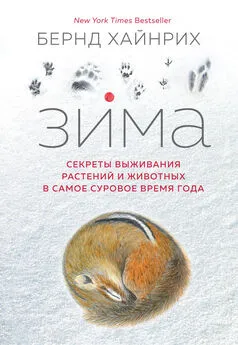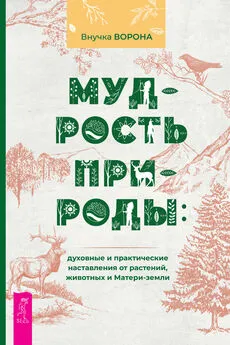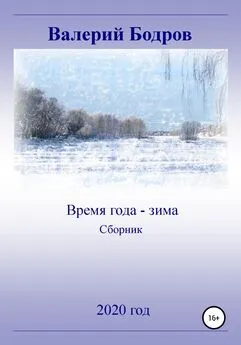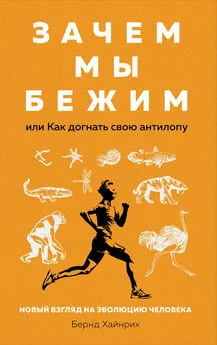Берндт Хайнрих - Зима: Секреты выживания растений и животных в самое суровое время года
- Название:Зима: Секреты выживания растений и животных в самое суровое время года
- Автор:
- Жанр:
- Издательство:Литагент Аттикус
- Год:2021
- ISBN:978-5-389-20228-3
- Рейтинг:
- Избранное:Добавить в избранное
-
Отзывы:
-
Ваша оценка:
Берндт Хайнрих - Зима: Секреты выживания растений и животных в самое суровое время года краткое содержание
В формате PDF A4 сохранен издательский макет.
Зима: Секреты выживания растений и животных в самое суровое время года - читать онлайн бесплатно ознакомительный отрывок
Интервал:
Закладка:
Я как-то прочел, что биологические исследования «создают барьер между человеком и природой». Наверно, автор этих слов, как и многие, ощущал, что наука требует отстраненности. Для меня это так, но эта отстраненность лишь фильтр, позволяющий отделить ценные зерна от беспорядочной шелухи и реальную находку от плода воображения. Биология как наука ведет не к отчуждению, вовсе наоборот. Она рождается из мощного желания близко узнать что-то, а близко узнать реальный предмет невозможно, пока не видишь его очертаний.
Я также читал, что Торо «перестал быть мыслителем», когда стал натуралистом. Думаю, здесь ситуация поставлена с ног на голову. Чтобы размышлять, нужны факты, а размышлять о природе в отсутствие фактов на самом деле значит чувствовать. Беллетристика остается беллетристикой, как ни старайся сделать ее правдоподобной.
Помимо многочисленных анонимно предоставленных мне материалов, которыми я свободно пользовался, я благодарю следующих людей за открытые обсуждения, критику и замечания, которые помогли мне отсеять реальное от воображаемого: Росс Белл и Дугласа Фергюсона (определение насекомых), Томаса Сили и Рика Дратчеса (пчелы), Уильяма Килпатрика (млекопитающие), Дэвида Баррингтона (растения), Эллен Талер и Чарльза Блэма (корольки), Дэниэла Вогта (оленьи хомячки), Брайана Барнса (зимоспящие арктические животные), Кеннета Стори (физиология спячки у насекомых и лягушек), Джека Дьюмена, Ольгу Кукаль и Ричарда Ли-младшего (спячка у насекомых), Гордона Ультша и Карлоса Крокера (спячка у черепах) и Линкольна Брауэра (данаиды монархи).
Главы 16 и 24 переработаны из статей, ранее опубликованных в журнале Natural History, а глава 5 частично публиковалась в журнале Audubon.
Кимберли Лэйфилд и Луиза О’Хара печатали рукопись – всегда быстро, хорошо и без задержек. Искренне благодарю Дэниэла Хальперна и Лизу Чейз, моих редакторов, чей интерес и энтузиазм меня всегда поддерживал, а все многочисленные вопросы и предложения были неоценимы. Благодарю свою жену Рэйчел Смолкер за понимание.
И посвящаю эту книгу Барту – Джорджу Бартоломью, за то, что познакомил меня с чудесами физиологической экологии и стал моим учителем в этой сфере.
Библиография
Imbrie J. and K. P. Imbrie (1979). Ice Ages: Solving the Mystery. Cambridge, Mass.: Harvard University Press.
Madigan M. T . and B. L. Marrs (1997). Extremophiles. Scientific American 276(4). P. 82–87.
Margulis L. (1982). Early Life. Boston: Science Books International.
Bentley W. A. and W. J. Humphreys (1931). Snow Crystals. New York: McGraw-Hill.
Blanchard D. C . (1998). The Snowflake Man. Blacksburg, Va.: McDonald and Woodward Publishers.
Borland Hal . (1971). A lifetime of snowflakes. Audubon 73. P. 59–65.
Burlington Free Press (1931). Bentley’s contribution. Burlington Free Press. December 24.
Court G. (1998). Winter grays. Natural History (February). P. 50–54.
Marchand P. J. (1993). The underside of winter. Natural History (February). P. 51–56.
Pruitt W. O., Jr. (1960). Animals of the North. New York: Harper and Row.
Thaler E. (1982). Ornithologisches in Schnee. Dic Gefiederte Welt (March). P. 90–92.
Benkman C. W. (1987). Food profitability and the foraging ecology of crossbills. Ecological Monographs 57(3). P. 251–267.
_. (1989). On the evolution and ecology of island populations of crossbills. Evolution 43. P. 1324–1330.
_. (1990). Intake rates and the timing of crossbill reproduction. Auk 197. P. 376–386.
Bent A. C. (1968). Life Histories of North American Cardinals, Grosbeaks, Buntings, Towhees, Finches, Sparrows, and Allies. Part I. New York: Dover Publications.
Grinnell J. (1900). Birds of the Kotzebue Sound region. Pacific Coast Avifauna, No. 1.
Macoun J. (1909). Catalogue of Canadian Birds, 2nd edition.
Palmer R. S. (1949). Maine birds. Bull. Mus. Camp. Zool. Vol. 102.
Porter E. (1966). Summer Island. New York: Balentine Books. P. 78.
Smith B. E. (1949). White-winged crossbills nesting in Maine. Maine Audubon Soc. Bull. 5. P. 12–13.
Stone W. (1937). Bird Studies at Old Cape May. Vol. II. New York: Dover Publications.
Tufts H. F. (1906). Nesting of crossbills in Nova Scotia. Auk 23. P. 339–340.
Sandell M. (1988). Stop-and-go stoats. Natural History (June). P. 55–64.
Snyder D. P. (1982). Tamias striatus // Mammalian Species. The American Society of Mammalogists. No. 168. P. 1–8.
Frazier A. and V. Nolan. (1959). Communal roosting by the Eastern Bluebird in winter. Bird Banding 30. P. 219–226.
Ghalambor C. K. and T. E. Martin . (1999). Red-breasted Nuthatch ( Sitta canadensis ) // The Birds of North America. Ed. A. Poole and F. Gill. No. 459. Philadephia: The Birds of North America, Inc.
Guntert M., D. Hay , and R. P. Balda . (1988). Communal roosting in the Pygmy Nuthatch: A winter survival strategy. Proc. Intern. Ornthol. Congr. 19. P. 1964–1972.
Headstrom R. (1970). A Complete Field Guide to Nests in the United States. New York: Ives Washburn, Inc.
Heinrich B. (1994). Bald-faced hunters // In a Patch of Fireweed. Cambridge, Mass.: Harvard University Press. P. 152–162.
Ingold J. L . and R. Galati . (1997). Golden-crowned kinglet ( Regulus satrapa ) // The Birds of North America. Ed. A. Poole and F. Gill. No. 301. Philadelphia: The Birds of North America, Inc.
Knorr O. A. (1957). Communal roosting of the Pygmy Nuthatch. Condor 59. P. 398.
Pitts T. D. (1976). Fall and winter roosting habits of Carolina chickadees. Wilson Bull. 88. P. 603–610.
Rogers L. (1981). A bear in its lair. Natural History 90 (October). P. 64–70.
Thaler E. (1990). Die Goldhähnchen. Wittenberg Lutherstadt: A. Ziemsen Verlag.
Walsberg G. E. (1990). Communal roosting in a very small bird: Consequences for the thermal and respiratory gas environments. Condor 92. P. 795–798.
White F. N ., G. A. Bartholomew , and J. L. Kinney . (1975). The thermal significance of the nest of the sociable weaver, Philetairus socius : winter observations. Ibis 117. P. 171–179.
Cowan I. Mc T. (1936). Nesting habits of the flying squirrel. Canadian Field Naturalist 46. P. 58–60.
DeCoursey P. J . (1961). Effect of light on the circadian activity rhythms of the flying squirrel, Glaucomys volans . Z. Vergl. Physiol. 44. P. 331–354.
Dunlap J. C. (1999). Molecular bases for circadian clocks. Cell 96. P. 271–290.
French A. R. (1977). Circannual rhythmicity and entrainment of surface activity in the hibernator, Perognathus longimembris . J. Mammal. 58. P. 37–43.
Heinrichs J. (1983). The winged snail darter. J. Forestry 81. P. 212–215, 262.
Maser C., R. Anderson , and E. N. Bull . (1981). Aggregation and sex segregation in northern flying squirrels in northeastern Oregon, an observation. Murrelet 62. P. 54–55.
_, J. M. Trappe , and R. A. Nausebaum . (1978). Fungalsmall mammal interrelationships with emphasis on Oregon coniferous forests. Ecology 59. P. 799–809.
McShea W. J., and D. M. Madison . (1984). Communal nesting between reproductively active females in a spring population of Microtus pennsylvanicus . Can. J. Zool. 62. P. 344–346.
Muul I. (1968). Behavioral and physiological influences on the distributions of the flying squirrels, Glaucomys volans . Misc. Publ. Mus. Zool., Univ. Michigan 134. P. 1–66.
Osgood F. L. (1935). Apparent segregation of sexes in flying squirrels. J. Mammal. 16. P. 236.
Rust H. J . (1946). Mammals of northern Idaho. J. Mammal. 27. P. 308–327.
Weigl P. D. and D. W. Osgood . (1974). Study of northern flying squirrel, Glaucomys sabrinus , by temperature telemetry. Amer. Midland Naturalist. 92. P. 482–486.
Wells-Gosling N. and L. R. Heaney . (1984). Glaucomys sabrinus // Mammalian Species, No. 229. P. 1–8.
Young M. W. (2000). The tick-tock of the biological clock. Scientific American (March). P. 64–77.
Adolph E. F . (1951). Responses to hypothermia in several species of infant mammals. Am. J. Physiol. 166. P. 75–91.
Barnes B. M. (1989). Freeze avoidance in a mammal: body temperatures below 0 °C in an Arctic Hibernator. Science 244. P. 1593–1595.
_. (1996). Sang froid. The Sciences (September/October). P. 12–14.
_, Omtzigt C., and Daan S. (1993). Hibernators periodically arouse in order to sleep // Life in the Cold: Ecological, Physiological, and Molecular Mechanisms. Ed. C. Carey et al. Boulder, Colo.: Westview Press. P. 555–558.
_ and Ritter D. (1993). Patterns of body temperature change in hibernating arctic ground squirrels // Life in the Cold: Ecological, Physiological, and Molecular Mechanisms. Ed. C. Carey et al. Boulder, Colo.: Westview Press. P. 119–130.
Bartholomew G. A. and T. J. Cade . (1957). Temperature regulation, hibernation, and aestivation in the little pocket mouse, Perognathus longimembris. J. Mammal. 38. P. 60–72.
Читать дальшеИнтервал:
Закладка:
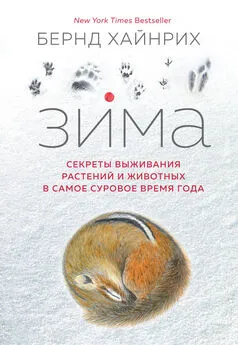
![Берндт Хайнрих - Зачем мы бежим, или Как догнать свою антилопу [Новый взгляд на эволюцию человека] [litres]](/books/1057566/berndt-hajnrih-zachem-my-bezhim-ili-kak-dognat-svo.webp)

